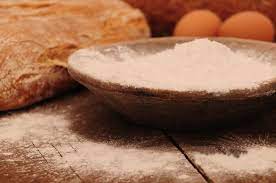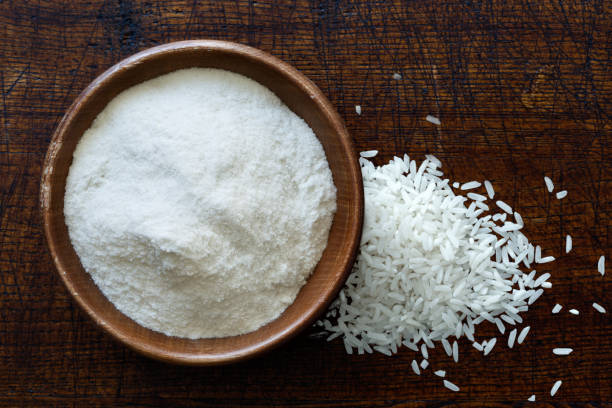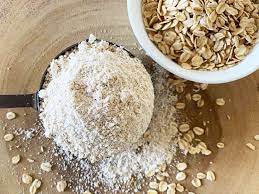Teff flour substitutions?

Teff reminds me a lot of oat flour. Why do you think that is? Because you may use it to make a delicious morning porridge and experience the benefits of a chocolatey flavor.
It’s a surprising pleasure for individuals who can’t eat gluten-free baked goods because it turns into flour. Without gluten, this flour can perform just as well as other flours.
If you’re looking for teff flour but can’t seem to find any, don’t give up. You can use tapioca flour instead of teff flour.
Sorghum flour, rice flour, quinoa flour, oat flour, millet flour, and coconut flour are other flour replacements. You’ll almost certainly discover one of these substitutes in one of your local supermarkets.
But first, you need to get to know each of them and how they might be used in your favorite dishes.
Substitutes for Teff Flour
Tapioca flour

Are you looking for a gluten-free alternative, such as teff flour? Tapioca flour is one of your excellent choices. It doesn’t have the same chocolatey flavor as teff, but it works well.
Tapioca starch and tapioca flour are two separate products you could see in the store. Don’t be alarmed or perplexed; both are the same.
You can choose between the two for your next baking session. Use only 20% tapioca flour for optimal results, while the remaining 80% can be made up of any flour.
Sorghum flour
Sorghum flour is the finest option for wheat flour if you prefer the taste and aroma of wheat bread.
It’s also gluten-free, making it one of my favorite healthy flours for baking cookies and brownies. You’ll appreciate the texture of sorghum flour; it’s similar to using traditional teff or wheat flour.
Just keep in mind that if you’re preparing cakes, you’ll need to combine them with other flours because they may be quite dense.
Rice flour

Depending on your preferences, you can use brown or white rice flour. The only difference between brown and white rice flour is that brown rice flour can be significantly denser.
This teff flour alternative is one of my favorites because it can be used in various baking recipes. I don’t always blend it with any flour because it’s not as dense as the two flours described above.
Also, if you’re missing teff porridge, you can make it with rice flour and a little cocoa powder and sugar.
Quinoa flour
Teff flour can be replaced with quinoa flour for a healthier and denser bread.
The beautiful thing about quinoa flour is that it gives the dish a nutty, earthy flavor. However, it’s preferable not to use too much because it can be bitter.
Mix it with other gluten-free flour like rice flour or almond flour to remove the bitterness from the flavor.
Furthermore, you may enjoy your daily carbs while simultaneously reaping the benefits of their high nutritious value.
Oat flour

Teff flour reminds me of oat flour, as I previously stated. If you want to go as near as possible, oat flour is the way to go.
You may manufacture your homemade oat flour by grinding oat grains in a food processor. When it comes to baked goods, this flour is fairly adaptable.
It can be used in baking, sweet sweets, and even cake mixes. To create that airy and fluffy finish with cake mixes, you’ll need to combine them with different types of flour.
Millet flour
If you haven’t heard about millet flour yet, now is the time to learn about it. It’s one of the sweet-tasting flours available on the market.
Although it is sweet, the flavor is not overpowering to overshadow the other elements. It’s also healthy because it’s high in magnesium, which most flours lack.
Because millet flour gives the dish a crumbly texture, it’s best to use it in your favorite cornbreads, muffins, and pie crusts.
Coconut flour
Coconut flour is your last resort if none of the other options are accessible. This flour has a pleasant aroma and flavor that you won’t even need to use vanilla essence when baking.
Even when blended with other components, the aroma is powerful enough to be noticed. Use coconut flour in your baked foods that don’t need to rise for the best results.
Coconut flour is dense, so if you want to use it in cakes, you’ll need to combine it with other flours to make it fluffy.
FAQs
What is teff flour, exactly?
Teff flour is made from whole grain flour with a light and delicate flavor. This flour, which dates back centuries, is commonly utilized as a culinary staple in Ethiopian regions. Flatbreads with savory meals are best made using this flour.
Is teff flour a good source of protein?
Yes, it’s one of the healthiest carbohydrates you can eat. It contains relatively little sodium, which helps people with hypertension or high blood pressure. It also contains magnesium, which aids in maintaining your cardiovascular system and the prevention of various disorders associated with it.
Can I use all-purpose flour instead of teff flour?
Yes, you are permitted to do so. 14 cup teff flour to 1 cup all-purpose flour is a good rule of thumb. Because teff flour is denser than all-purpose flour, you don’t need as much of it.
Is teff flour costly?
It is indeed more expensive than other flours. This is because it is not extensively grown in some locations, and the import costs add to the flour’s cost.
With so many options for teff flour substitutes, I’m sure you’ve already made your decision. Let us know which one you’ve tried and how it went in the comments section below.











